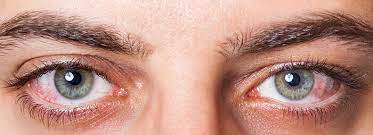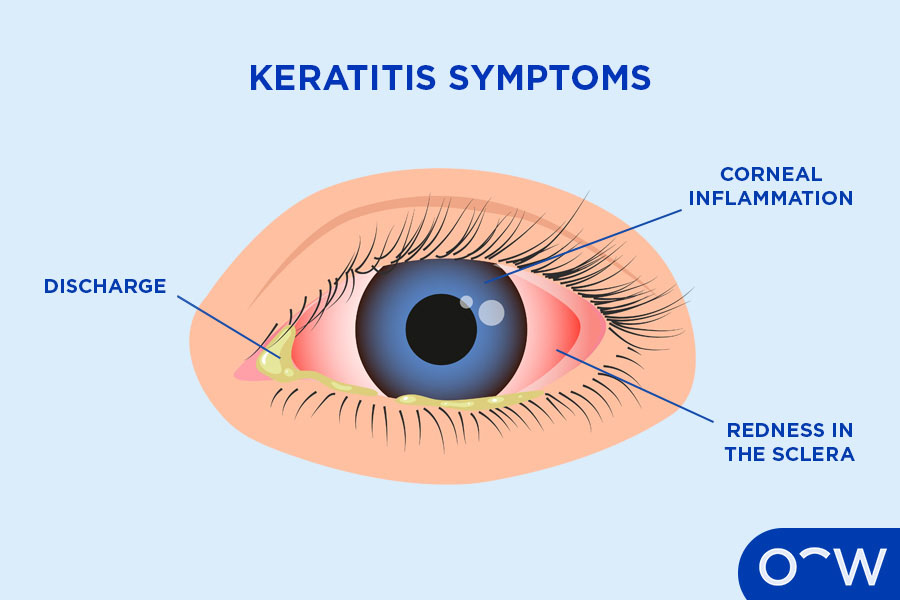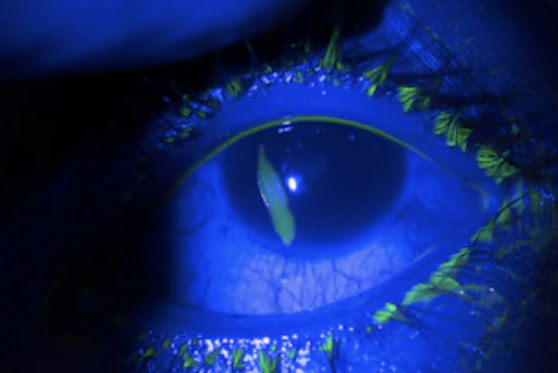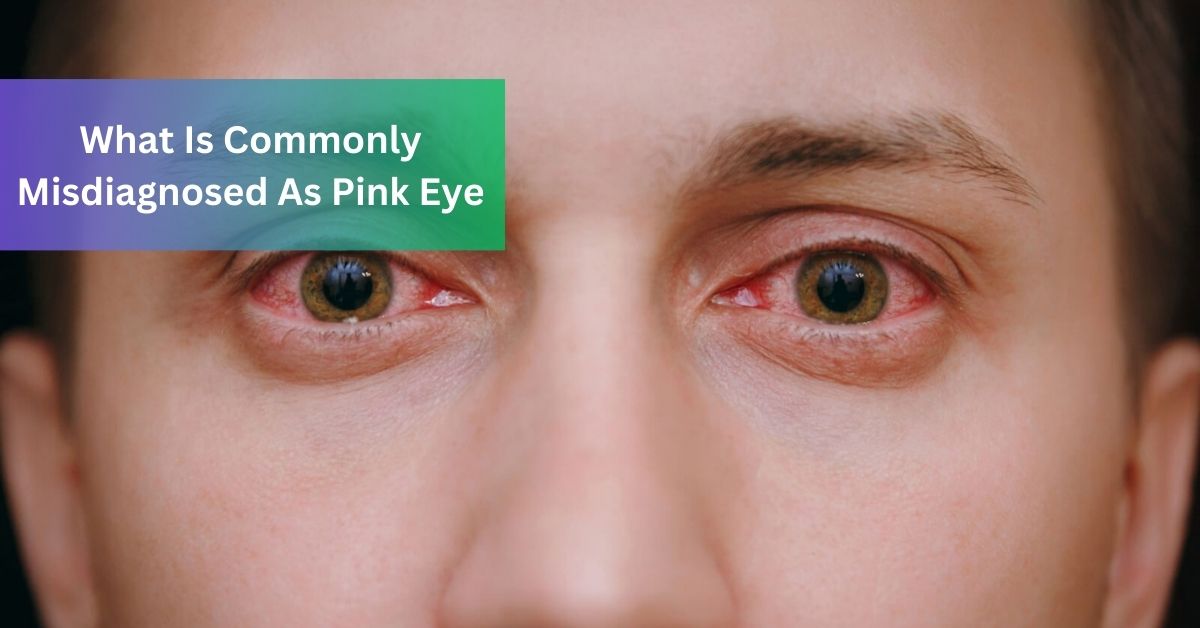From allergic conjunctivitis to corneal abrasions, learn about similar symptoms and potential misdiagnoses in eye health.
Blepharitis, allergic conjunctivitis, dry eye syndrome, keratitis, uveitis, and corneal abrasions are commonly misdiagnosed as pink eye due to similar symptoms such as redness, irritation, and discharge.
This article delves into conditions commonly mistaken for pink eye, exploring their distinguishing features to aid accurate diagnosis and management.
Allergic Conjunctivitis – Say Goodbye To Itchy, Watery Eyes!
Allergic conjunctivitis is when your eyes get red, itchy, and watery because of allergies like pollen or pet dander. It’s like a pink eye but caused by allergies instead of germs.
If you have allergies, your eyes might feel worse during certain times of the year or when you’re around things that trigger your allergies, like when you’re near a cat or during springtime when pollen is in the air.
Unlike the pink eye, which can have thick, gooey discharge, allergic conjunctivitis usually makes your eyes watery with a clear liquid.
Doctors can tell it’s allergic conjunctivitis by asking about your allergies and looking at your eyes. They might give you eye drops or medicines to help with the itching and redness. Avoiding things that worsen your allergies can also help your eyes feel better.
Dry Eye Syndrome – Get Back To Feeling Comfortable And Clear-Eyed!

Dry eye syndrome, a prevalent ocular condition, arises from either inadequate tear production or poor tear quality, leading to discomfort, redness, and irritation.
Unlike the infectious pink eye, which is characterized by inflammation of the conjunctiva, dry eye syndrome primarily affects the tear film, disrupting its lubricating function.
Patients with dry eye syndrome often report sensations of grittiness or foreign body presence in the eyes, along with intermittent blurry vision that improves with blinking.
Environmental factors such as wind, low humidity, or prolonged screen time exacerbate symptoms. Additionally, systemic conditions like Sjogren’s syndrome or hormonal changes can predispose individuals to develop dry eye syndrome.
Management typically involves lubricating eye drops, lifestyle modifications, and addressing underlying contributing factors to alleviate symptoms and improve ocular comfort.
Blepharitis – Book Your Appointment Now!
Blepharitis, an often-overlooked condition, entails inflammation of the eyelids, typically stemming from bacterial overgrowth, seborrhoeic dermatitis, or dysfunction of the meibomian glands.
This inflammation leads to a range of uncomfortable symptoms, including redness, irritation, and crusting along the margins of the eyelids.
Unlike the pink eye, which primarily affects the conjunctiva, blepharitis focuses on the eyelids. Patients may describe burning sensations or a persistent feeling of a foreign object in the eye.
Additionally, excessive tearing may occur as a result of the irritation. Careful examination can reveal specific signs such as erythematous lid margins, meibomian gland dysfunction, and cylindrical dandruff at the base of the eyelashes.
Effective management of blepharitis often involves a combination of warm compresses, lid hygiene, topical or systemic antibiotics in cases of bacterial involvement, and addressing underlying contributory factors such as ocular surface inflammation or meibomian gland dysfunction.
Keratitis – Discover How To Protect Your Eyes!

Keratitis is when the clear part covering the front of your eye gets inflamed. It can happen from infections caused by bacteria or viruses, scratches, wearing contact lenses too much, or having specific health issues like autoimmune diseases.
It can make your eye red, painful, and sensitive to light. So, it’s essential to get it checked by a doctor to determine the cause and get the proper treatment.s.
1. Symptoms of keratitis:-
Such as redness, pain, light sensitivity, and blurred vision may lead to confusion with pink eye. However, keratitis often presents with more severe pain, decreased visual acuity, and specific findings upon examination, such as corneal opacity or infiltrates.
Uveitis – Schedule An Eye Exam Today!
Uveitis is when the middle layer of your eye, called the uvea, gets inflamed. This layer includes the iris (the colored part of your eye) and the choroid (a layer behind the retina).
Uveitis can show up differently depending on which of the uvea is affected. It might affect the front, middle, back, or all parts of your eye.
This inflammation can cause eye pain, redness, and sensitivity to light. Treatment usually involves medications to reduce inflammation and manage symptoms.
- Symptoms:-
It may include eye redness, pain, light sensitivity, and blurred vision resembling a pink eye. However, uveitis typically presents with more profound ocular pain and severe light sensitivity and may be associated with systemic conditions such as autoimmune diseases or infections.
Corneal Abrasion – Ensure Clear Sight For A Bright Future!

A corneal abrasion is like a scratch on the eye’s clear covering. It often happens from something poking the eye or rubbing it too hard.
This can cause sharp pain, redness, and sensitivity to light. Things like dust, fingernails, or contact lenses can cause it.
Treatment involves keeping the eye moist with drops or ointments and avoiding rubbing it. In severe cases, a protective covering may be needed. It’s crucial to see a doctor to prevent complications and promote healing.
- Symptom:-
While the hallmark symptom is intense eye pain, other features such as redness, tearing, and light sensitivity may mimic the pink eye.
However, corneal abrasions present with localized pain, often exacerbated by blinking or eye movement. Moreover, a careful examination with fluorescein staining can reveal the presence of an epithelial defect, confirming the diagnosis.
Conclusion:
Blepharitis, allergic conjunctivitis, dry eye syndrome, keratitis, uveitis, and corneal abrasions often mimic pink eye symptoms like redness, irritation, and discharge, leading to misdiagnosis.
FAQs:
1. Can allergies be mistaken for pink eye?
Yes, allergic conjunctivitis shares symptoms like redness and itching, leading to misdiagnosis.
2. Is dry eye often confused with pink eye?
Dry eye syndrome can mimic pink eye symptoms such as redness and irritation, causing misidentification.
3. Are corneal abrasions misdiagnosed as pink eye?
Corneal scratches from foreign objects can present similar redness and discomfort, leading to confusion.
4. Can bacterial infections be misidentified as the pink eye?
Bacterial conjunctivitis shares symptoms with pink eye, like discharge and redness, contributing to misdiagnosis.
5. Is uveitis commonly mistaken for pink eye?
Yes, uveitis can present with redness and pain, leading to misdiagnosis as pink eye.
6. Are viral infections often confused with pink eye?
Viral conjunctivitis may resemble pink eye symptoms, including redness and discharge, causing misdiagnosis.
Read More:














+ There are no comments
Add yours